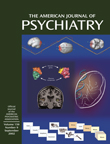Predicting Adolescent Violence: Impact of Family History, Substance Use, Psychiatric History, and Social Adjustment
Abstract
OBJECTIVE: The aim of this study was to provisionally develop an efficient screening method to detect adolescents at high risk for committing a violent act by young adulthood. In addition, the authors sought to use this screening instrument, in conjunction with child and parent psychopathology and substance abuse data, to determine the accuracy of violent outcome predictions. METHOD: The probands were men with a lifetime history of DSM-III-R substance use disorder (N=38) and men with no adult psychiatric disorder (N=61). Their biological sons were studied at two time points. At age 12–14, the offspring completed a 13-item Violence Proneness Scale, which was derived by using items from the revised Drug Use Screening Inventory. The occurrence of violent acts was then assessed at a follow-up evaluation when the offspring were 19 years of age. RESULTS: Among the offspring, a DSM-III-R axis I psychiatric disorder and a Violence Proneness Scale score of 10 or higher at age 12–14 predicted a violent outcome by age 19. The overall accuracy of prediction was 77%. Sensitivity was 81%, and specificity was 76%. Substance use disorder or psychopathology in the probands or substance use frequency in the children did not contribute to the prediction of violence. CONCLUSIONS: The brief Violence Proneness Scale, which measures school and peer adjustment, in conjunction with a childhood psychiatric history may constitute an efficient screening procedure for identifying youth who are at high risk for committing acts of violence.



